Original author: el4d.eth
introduce
introduce
Nouns DAO is undergoing governance changes. Because Nouns DAO is worried that someone will pass a proposal that will drain the treasury (currently about 26K ETH). Now the last line of defense is the Nouns Foundation's right to veto any proposal. Nounder and Nouner (DAO members) agree on the goal of turning off the veto.
Dialectic wrote two papers about this attack and potential mitigations, and from these ideas, dynamic quorum becomes the safest possible first attempt. Dynamic arbitration is not designed to address the largest attacks (such as 51% attacks), but rather voter apathy.
first level title
dynamic arbitration
Arbitration is the minimum number of For votes a proposal must pass, currently set at 10% of the total number of votes, for example, as of August 22, 2022, there are 417 Noun, which means that a proposal created today requires at least 41 For votes to pass.
Dynamic arbitration determines the hard voter count based on its contentiousness; simply put: more negative votes → higher hard voter count.
This will ensure an appropriate level of agility in DAO governance, where non-controversial proposals will require a lower hard-vote population and highly contentious proposals will require a higher number.
image description
(Quoted from Dialectic's second article)
In the simplest form: for each negative vote, the number of hard votes increases by one (we'll complicate things later). Using the above numbers, a proposal with no dissenting votes needs 41 votes to pass; 1 dissenting vote would require 42 votes; and 10 dissenting votes would require 51 votes to pass.
Starting a dynamic quorum requires setting some important parameters. We'll start with a simple definition and dig into it later in this article.
Minimum quorum votes base point: Similar to v1's "quorum votes base point" set to 10%, this parameter determines the quorum votes required for a proposal to pass, even with 0 negative votes.
Maximum Arbitration Vote Base Point: Determine the upper limit of the arbitration base point. For example, when it is set to 2000, the number of hard voters cannot exceed 20% of the total.
Coefficient: The hard voter count that determines how much each downvote increases (until a maximum is reached).
example
example
Suppose we have submitted a Nouns DAO proposal and want it to pass; we might consider the question: "How many negative votes are needed to reject my proposal?"
In v1 (the current DAO logic), it looks like this:
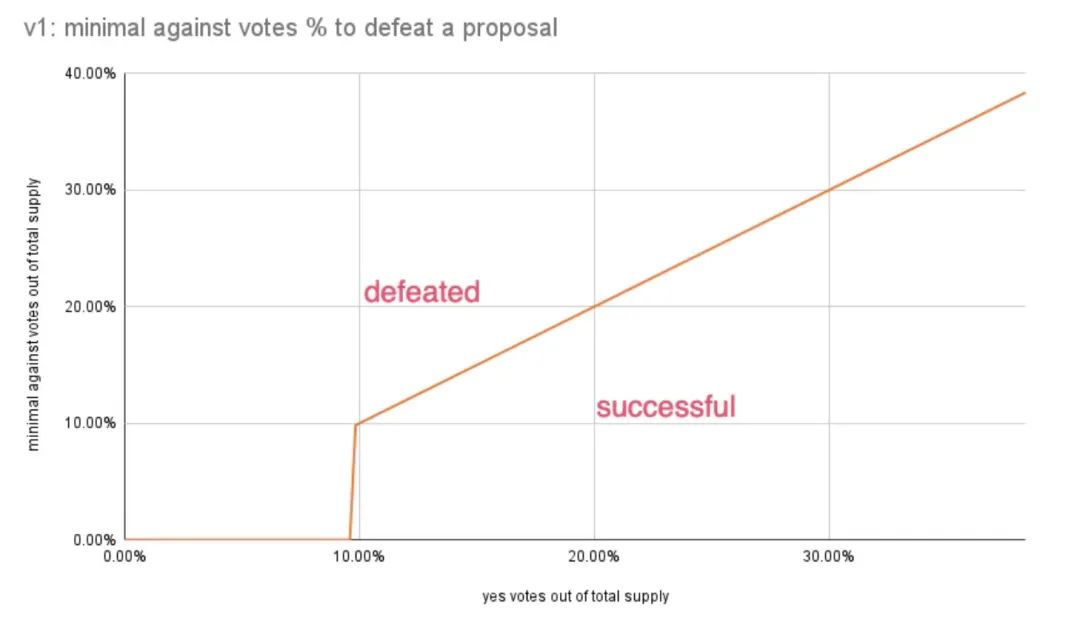
first level title
V1 vs v2 baseline
We will now review v1 and v2, modifying one parameter at a time to better understand their impact. We'll start with a baseline configuration:
Coefficient = 1; Minimum Arbitration Base Points = 1000; Maximum Arbitration Base Points = 2000
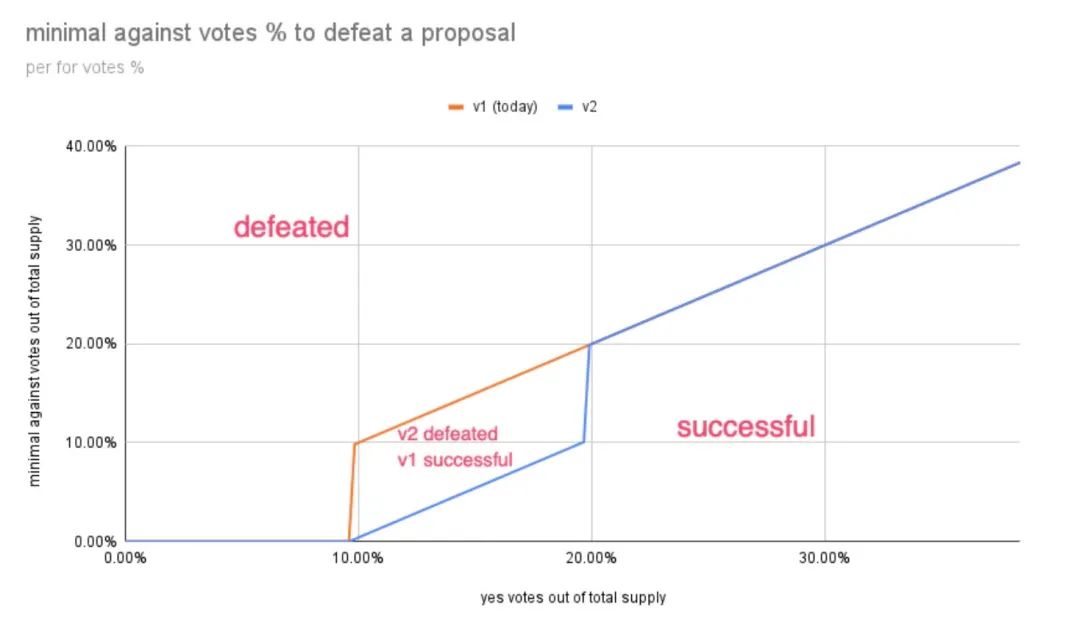
This diagram helps visualize three distinct parts:
Until the minimum quorum point is reached: v1 and v2 behave identically, i.e. proposals are rejected without any negative votes due to the hard vote count (we'll complicate this later) .
Between min quorum and max quorum: This is a dynamic quorum that makes it easier for proposals to be rejected with fewer negative votes (they raise the hard vote count).
After reaching the maximum quorum point: a hard cap on the number of voters, we default to the most intuitive behavior, where yes votes must outnumber no votes for a proposal to succeed.
first level title
minimum arbitration point
Two charts with different minimum basis points:
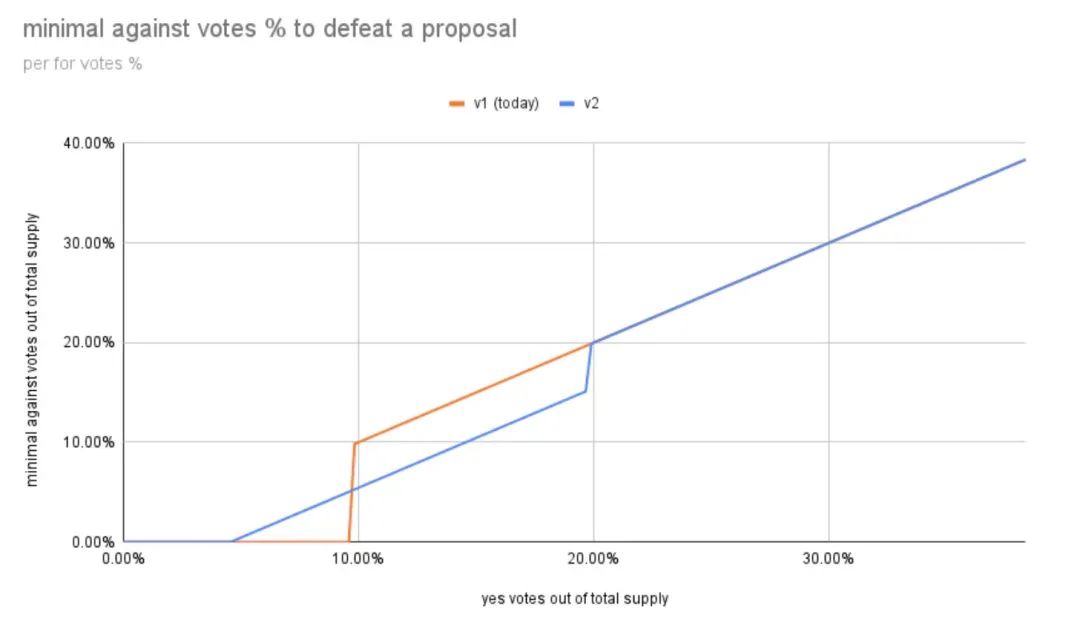
Minimum Arbitration Base Points = 500; Maximum Arbitration Base Points = 2,000; Factor = 1

Minimum Arbitration Base Points = 1,500; Maximum Arbitration Base Points = 2,000; Factor = 1
Increasing the value of the minimum quorum point increases the space in the middle of the graph, and although a proposal succeeds in v1, it is rejected in v2, making it possible to reject a proposal before the maximum quorum point (both v1 and v2 are determined by a simple multi-vote system) will become much easier. Reducing the minimum quorum base point produces this cool new graph shape, below the v1 quorum (10%), it's actually hard to veto proposals in v2.
first level title
Maximum Arbitration Base Point
Two charts with different maximum pip values:
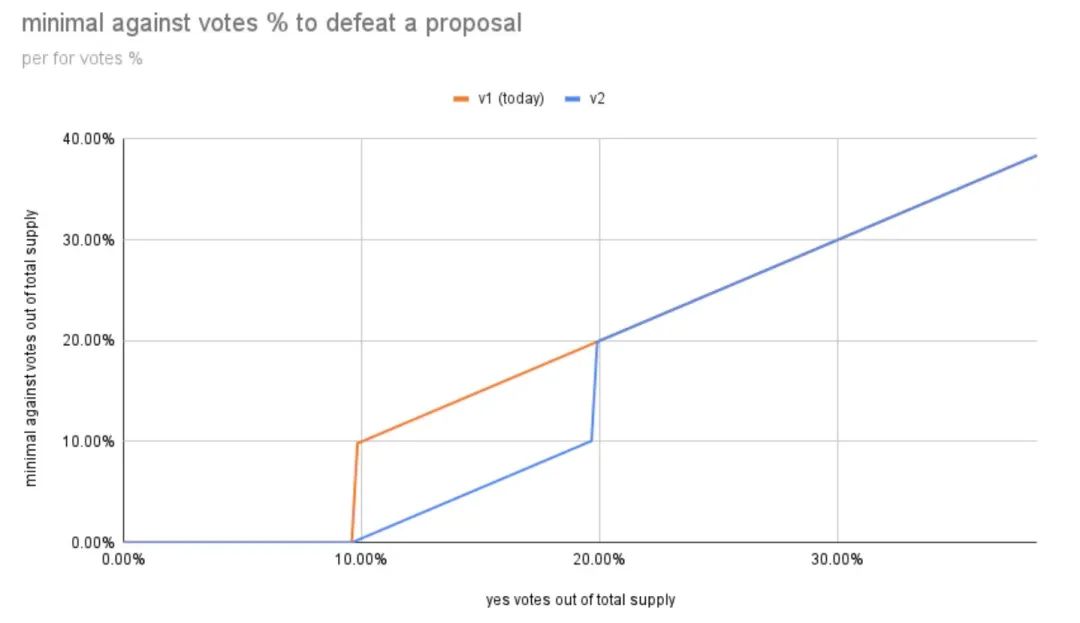
Maximum Arbitration Base Point = 2,000; Minimum Arbitration Base Point = 1,000; Factor = 1
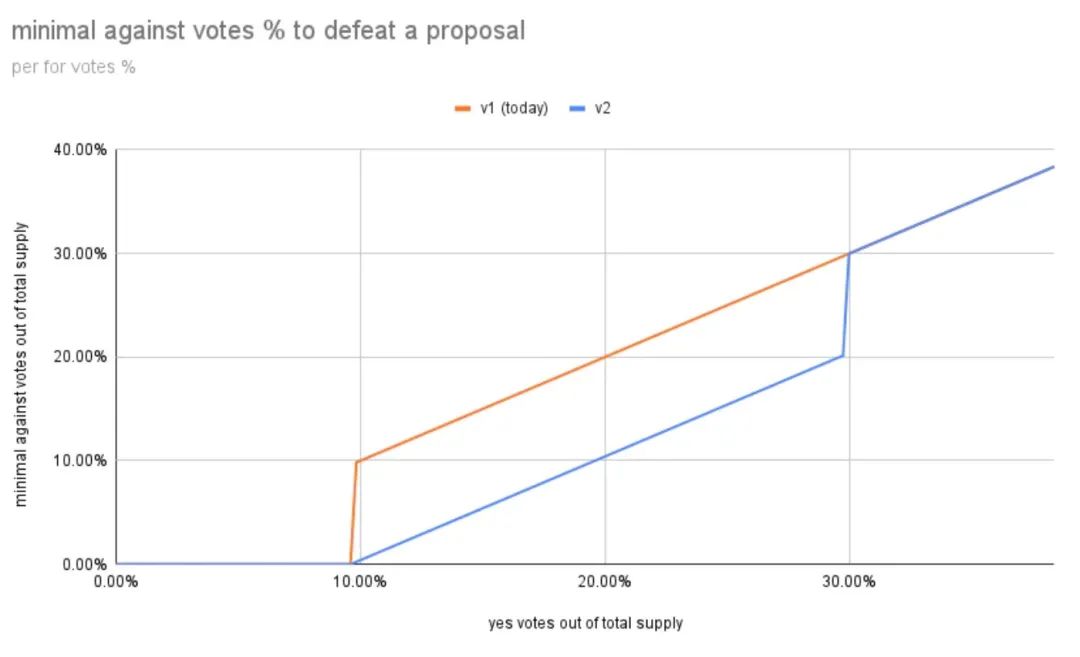
Maximum Arbitration Base Point = 3,000; Minimum Arbitration Base Point = 1,000; Factor = 1
Increasing the maximum quorum base point delays the point in the graph where v2 regresses to a simple majority, thus lengthening the middle region where it is easier to veto proposals. When setting this parameter, there may be "when do we want to revert from dynamic quorum to simple multi-vote?" question.
The sum of these two axes is the total participation rate, which has recently fluctuated between 14% and 38%. For example, in the higher setup graphs, we only reverted to simple multi-vote at 30%+ negative votes, which meant negative votes were more influential until we reached 60%+ participation.
first level title
coefficient
Two charts with different coefficient values:
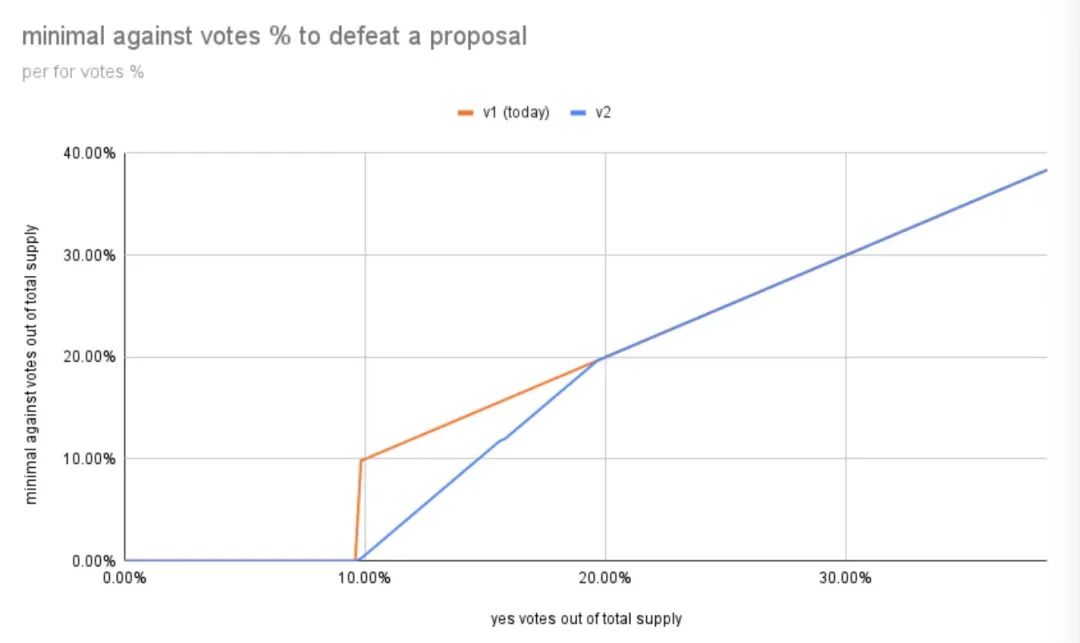
Coefficient = 0.5; Maximum Arbitration Base Points = 2,000; Minimum Arbitration Base Points = 1,000

Factor = 2; Maximum Arbitration Base Points = 2,000; Minimum Arbitration Base Points = 1,000
Different coefficients change the shape of that famous middle section, at 0.5 for obtuse triangles, 1 for parallelograms, and 2 for obtuse trapezoids. Note that it pushes the v2 line down, making each negative vote stronger, so fewer votes are needed to reject the proposal.
first level title
Review and Potential Guiding Questions
Review three parts of thinking:
Before the minimum arbitration point is reached: the minimum number of votes required to pass a proposal without objections.
Between the minimum arbitration base point and the maximum arbitration base point: the role of dynamic arbitration, making it easier for proposals to be rejected with fewer negative votes.
Maximum Post-Arbitration Basis Points: Simple Multivote.
Perhaps start by estimating a most realistic participation rate; the max quorum point should probably be less than half that rate with a bit of margin, otherwise if the value is higher you risk a minority of holders stalling the DAO decision. Also, consider participation rates where outcomes are determined by simple multiple voting rather than adding hard vote numbers.
Next, perhaps consider whether a proposal with no negative votes should be easier or harder to pass than the current v1. It might also be useful to consider a minimum arbitration basis point to reflect whether the DAO is leaning more toward "yes" or "no," as proposals have crossed the proposal threshold.
first level title
What are other DAOs doing?
We know of other governance systems that employ dynamic input:
Celo's hard voter turnout ("participation rate") is set using an exponential moving average of the final participation rates of previous proposals.
Original link